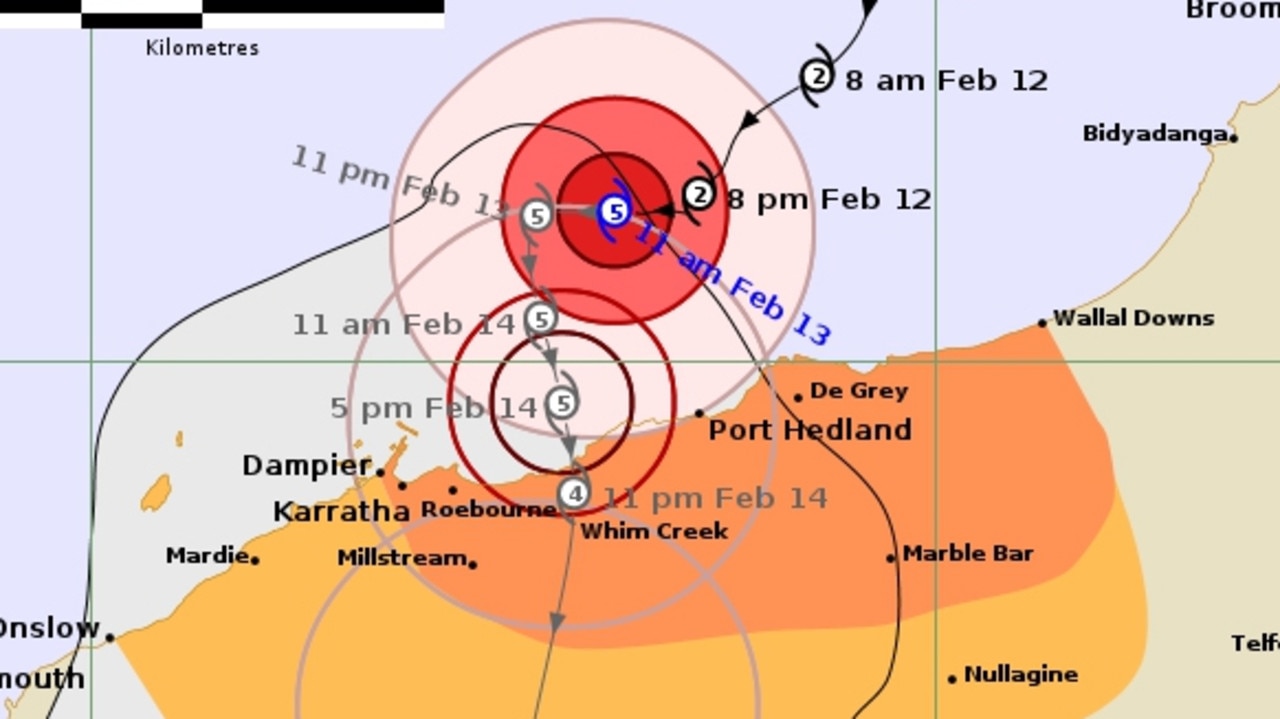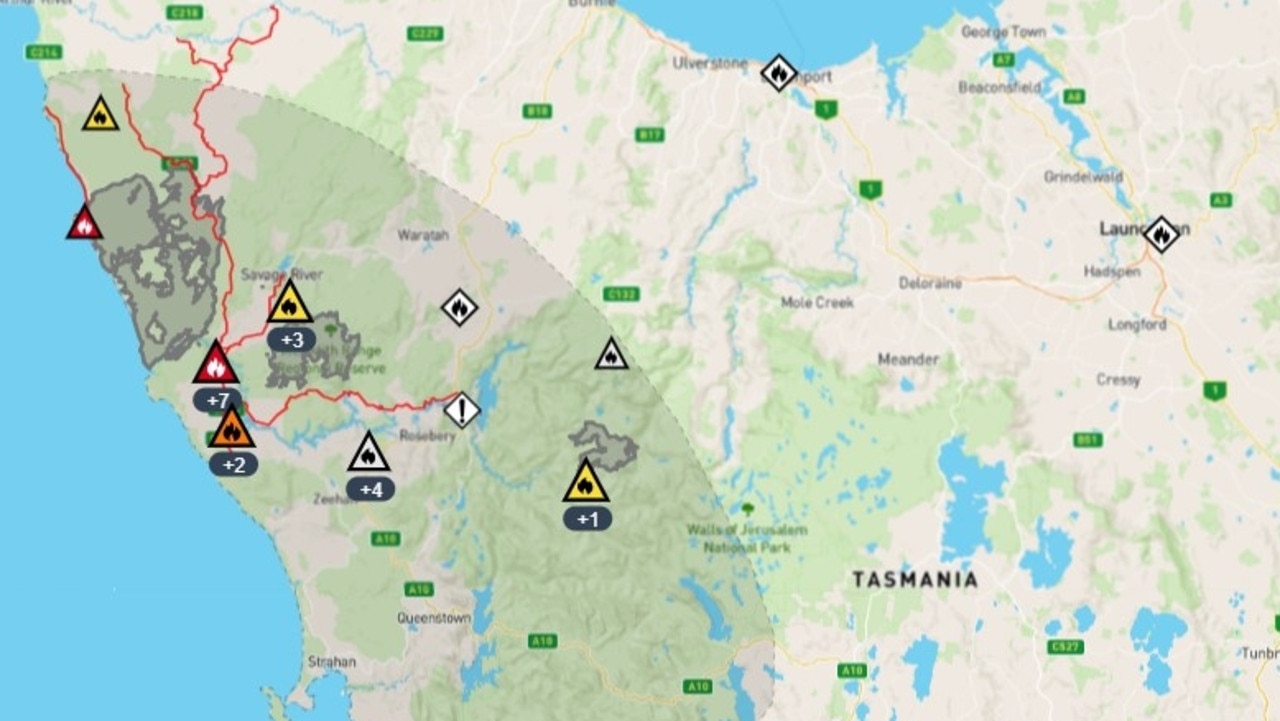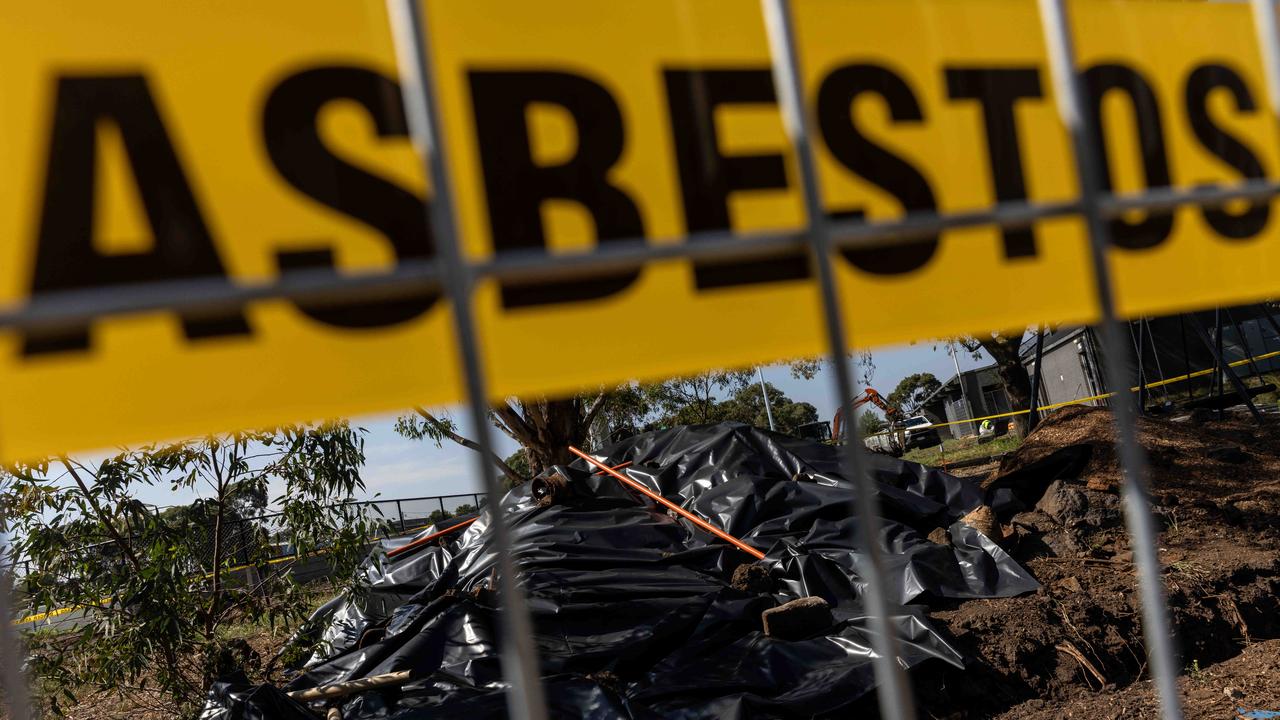What happened to the Marree Man? Mysterious South Australia geoglyph wiped off map
HE APPEARED out of nowhere in a barren corner of Australia. Two decades on, the mystery of the Marree Man still baffles.
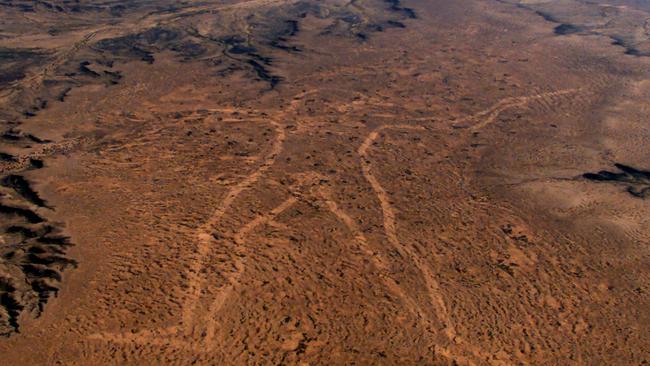
IT’S as enthralling as any ancient legend, but the mystery of South Australia’s Marree Man is far more modern and in danger of being far shorter lived than folk figures before it.
From the red dirt ground, it’s a series of dug out lines wider than city roads apparently carved with some serious excavation equipment.
The lines and swirls look to be the product of an impressive operation, but its not until you get up in the air that spectators can really marvel at the mythical giant man.
From the air, those lines made with a plough or ripper form the figure of Marree Man. The 4km tall carving, 28km in total length, clearly makes up the shape of an indigenous man, most likely a hunter armed with a throwing stick.
At least that was the case in 1998 when a tourism operator was reportedly the first to catch a glimpse of the enormous artwork. Since then, natural forces have caused the once 35cm deep carved outline to erode and the figure to fade.
Though locals have been campaigning for the Marree Man to be preserved, these days he’s just about gone with only a few barely distinguishable features remaining.
“Very little of it remains and it’s just devastating,” Phil Turner, a local publican and vocal campaigner for the preservation of Marree Man, tells news.com.au.
“There are so many aspects about it which are just mind boggling. The size, its shape, where it’s located, how it was done. On top of those things it was just an absolute herculean task, a major effort and it produced an extraordinary work of art.
“The most incredible thing is, we don’t know who did it.”
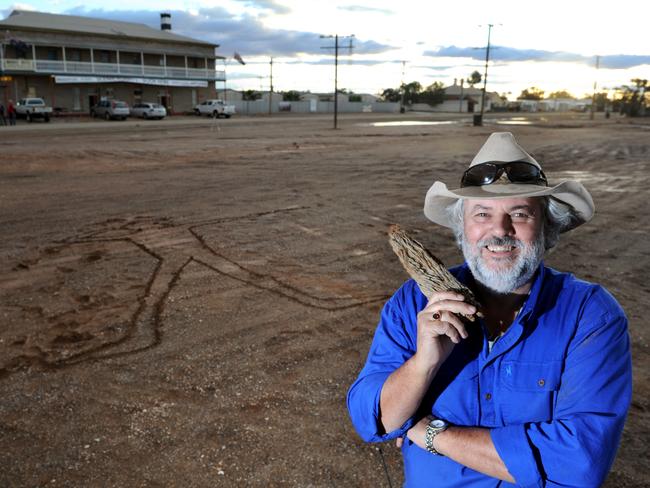
WHODUNNIT
The Marree Man was first spotted, according to his own claims, by tour flight operator Trevor Wright.
Mr Wright noticed the outline from the air back in 1998 and reported back to the town, which was soon in the grip of a Chinese whispers epidemic.
Everyone from the US Army to local artists was said to have had a hand in creating the figure.
Mr Turner recalls first reading about the Marree Man those 17 years ago in an article which included a more than half-formed argument for alien involvement.
“You can understand because of its sheer size, and no one could really explain it,” he says.
“Around the same time all these (crop) circles were appearing in England and Scotland, I guess you could say the world was UFO happy. I was enthralled.”
The alien theory has never really stood up but others have circulated widely.
Mr Turner said not a week goes by when a pub patron doesn’t claim to know exactly how it got there.
Just last week, he says, a returning local claimed to have witnessed a fleet of Australian Army vehicles with trawling equipment heading towards the Marree plateau.
History shows the army was in town for a training exercise but no involvement with the artwork has been proven.
Another theory says it was a parting gift from the US Air Force after their time at the Joint Defense Facility Nurrungar they shared with the Australian Defence Force at Woomera from 1969 to the late 1990s.
The only solid lead was taken to the grave by contemporary South Australian artist Bardius Goldberg.
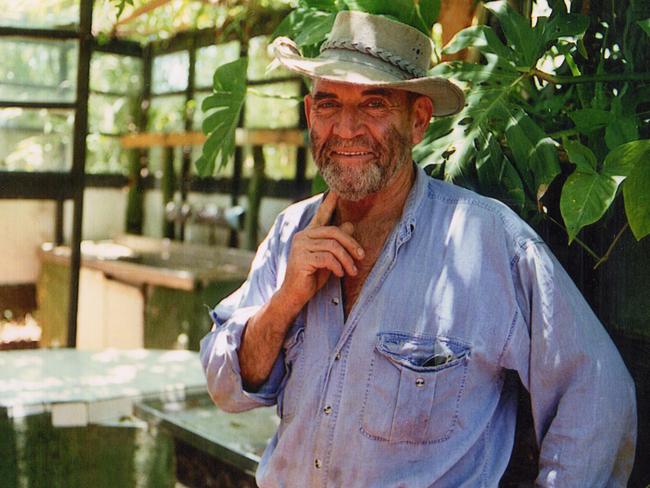
The eccentric artist was reported to have wanted to create a sculpture that could be seen from space.
The Adelaide Advertiser reported he had told friends he’d been paid $10,000 to create the plan for the giant man and shown early grafts of the sand sculpture.
“That’s all there is for sure. There’s no two ways that Goldberg was involved, but unfortunately he passed away in 2002,” Mr Turner says.
“A lot of people have been involved, said they’ve been involved, but whatever happened here we are all these years later and now people are saying ‘do we really want to know who did it?’ because that’s the mystery.”
WHY BOTHER SAVING IT?
Along with the mystery of who created Marree Man is the question of why.
Of course, there’s not a solid answer to this either but it’s certainly served its purpose over the years.
It's widely recognised as the second largest geoglyph — a large design produced on ground — in the world.
Before it started fading, it was a star attraction of charter flight tours around the region.
The region’s native title owners, the Arabana people, took ownership of the man with the Arabana Aboriginal Corporation trademarking the term “Marree Man” for use on souvenirs, though the trademark was given up earlier this year the Advertiser reports.
Though local tourism authorities have been unenthusiastic about the figure, local operators believe it could serve as a strong sustainable attraction to the outback area.
Mr Turner says everyone who comes to his pub asks, “where’s the Marree Man?”.
“The far north desert regions of SA lack a long term sustainable outback attraction,” he says.
“The NT’s got Uluru, there’s Kakadu, the Kimberly, even the Great Barrier Reef is considered and outback attraction in Queensland. South Australia doesn’t have anything, other than when there’s water in Lake Eyre every 10 years and everyone flocks to see the fish and birds, but there’s nothing long term and sustainable and I believe the Marree Man could be that.”
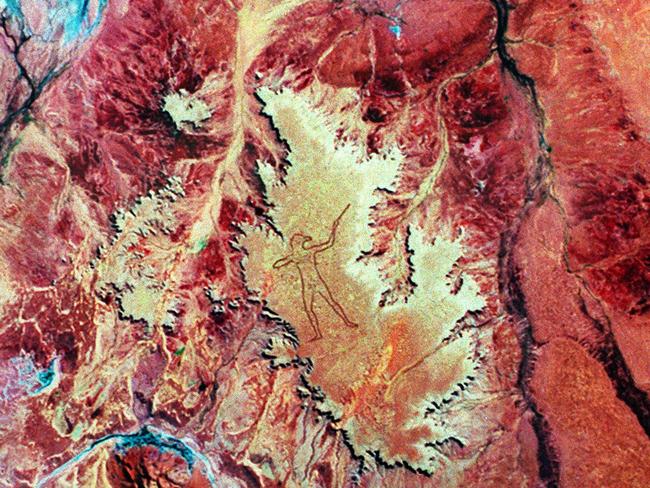
WHO SHOULD TAKE CARE OF IT?
The main reason the giant figure hasn’t been preserved is because nobody’s stuck up their hand to take care of it.
Aaron Stuart, the chairman of the Prescribed Body Corporation of Arabana Native Title, who said Marree Man would be known as Arabana Man in keeping with the local people’s wishes, told the Advertiser it wasn’t really a priority.
“There are more important cultural artworks right next to Arabana Man that you cannot see from a plane ... rock carvings that are 40,000 years old,’’ Mr Stuart said.
“So, to me, it doesn’t bother me if Arabana man isn’t restored. There are people who are looking to it from a financial benefit point of view, but Aboriginal people are not going to be treated like third class citizens and not get something out of their land while others benefit.”
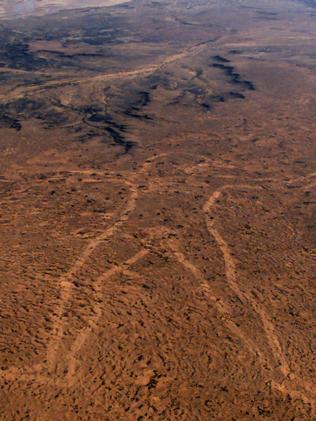
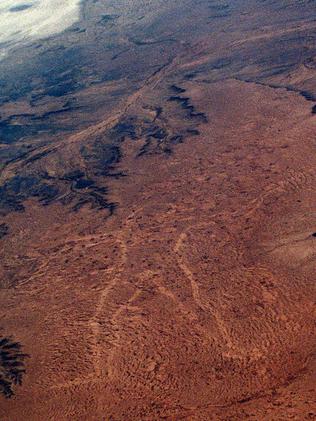
Representatives from the Art Gallery of South Australia and the Tourism Ministry said they had had no approaches from members of the community to take responsibility for the artwork.
And the biggest cheerleader for Arabana or Marree Man’s preservation doesn’t even know how he’d like it handled.
“I don’t think it’s anyone’s responsibility, it’s got to be initiated by people like ourselves who appreciate it,” Mr Turner says.
“I’m not proportioning blame, I think it’s just the natural process of what happens. Unless some authority decides hey this is important, and I believe that authority should be maybe the national gallery, SA museum, whatever, only from the perspective that it should be protected as a state asset.”
The Man’s enthusiasts say restoring it wouldn’t be a particularly difficult job, but it would need considerable maintenance.
“It’s going to require very sophisticated surveying and station plotting and reverencing back with satellite photos from when it first appeared, but it’s no different to restoring a find work of art,” Mr Turner says.
“You may only have one small corner of the Rembrandt left but after years with a lot of professional work you can restore it.”
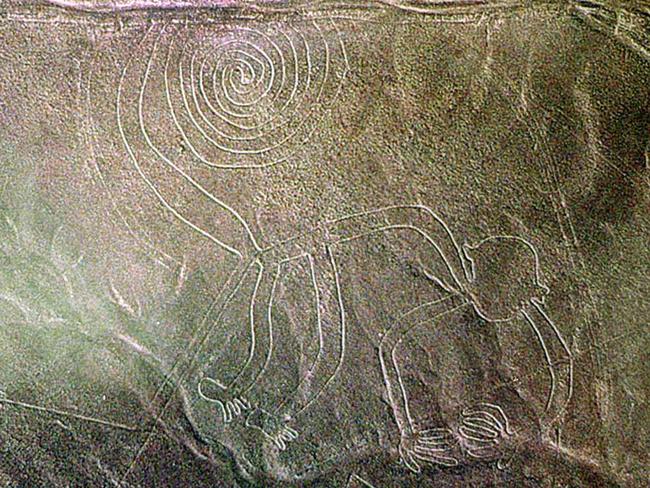
NOT THE ONLY MYSTERY
As in size, South Australia’s famous geoglyph is only eclipsed in mystery by the Peruvian Nazca Lines.
Recognised as the world’s largest geoglyphs, the series of figures which can only be seen from the air are believed to have been created to be seen by the Nazca people’s gods.
Some say the figures, ranging from detailed animals to apparently random lines and more intricate designs, are made to represent constellations, while other theorised some of them represented the flow of water.
The lines were first spotted from the air in 1939 and in 1994 were recognised as a UNESCO World Heritage Site.
But World Heritage status or not, to some, the Marree or Arabana Man will always be that little bit more special.
“I get goosebumps when I stand there and I look and think how the hell did they do that? Standing alongside it is a pretty humbling experience, but to see it from the air is amazing.”


